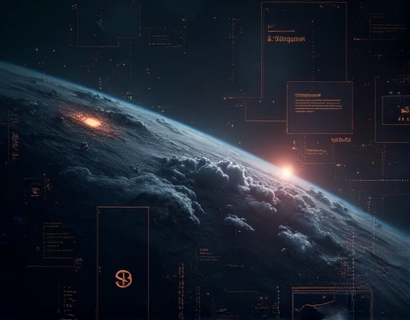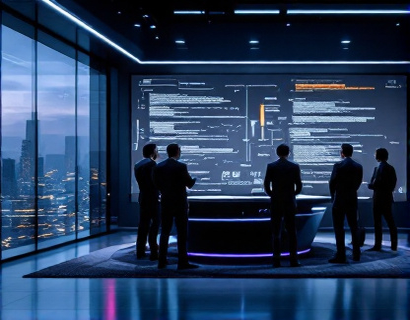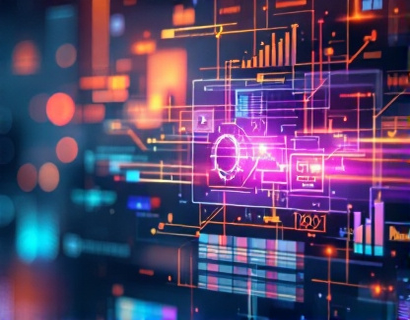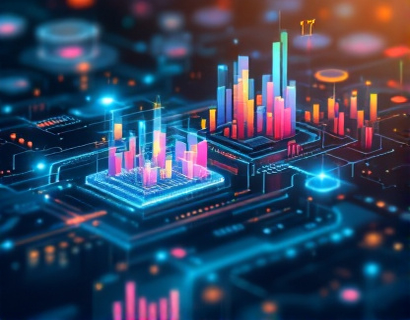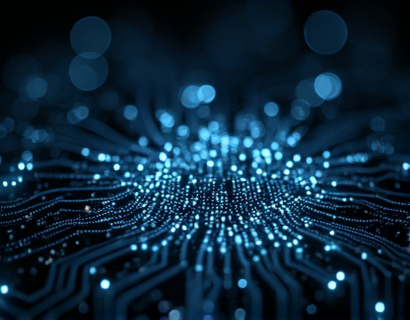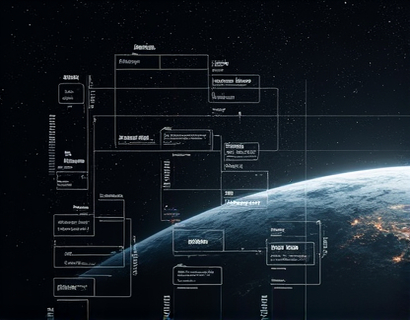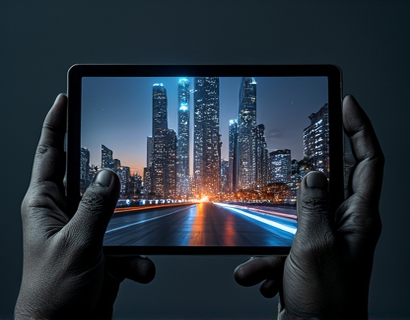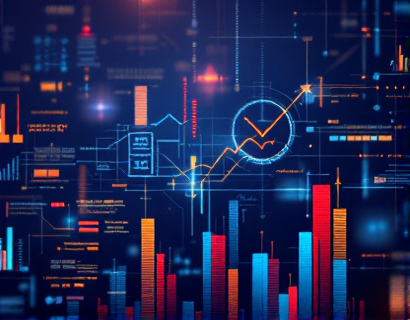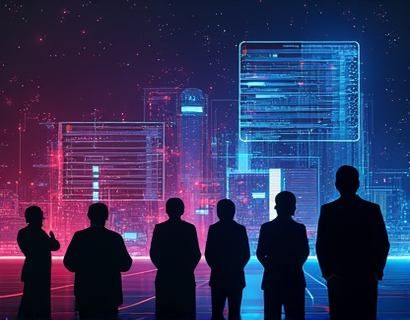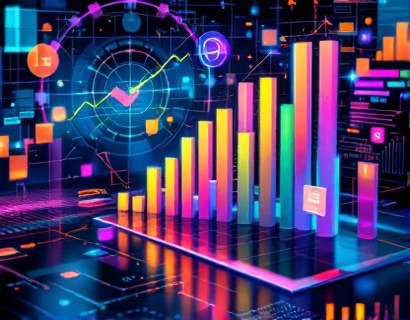Decentralized Productivity Elevated: Harnessing AI and Crypto for Next-Gen App Solutions
The intersection of artificial intelligence and cryptocurrency is giving birth to a new era of productivity tools, redefining how we approach tasks and manage workflows in the digital age. This fusion is not just about combining two cutting-edge technologies; it's about creating an ecosystem where decentralized applications (dApps) powered by AI can significantly enhance efficiency, security, and user experience. For tech professionals, early adopters, and anyone interested in the future of digital solutions, understanding this synergy is crucial. This article delves into how the integration of AI and cryptocurrency is turbocharging app innovation, offering seamless and efficient tools that streamline tasks and boost productivity.
The traditional centralized model of software development and application deployment is being challenged by decentralized technologies. Blockchain, the backbone of cryptocurrencies, provides a secure, transparent, and tamper-proof ledger for transactions and data storage. When combined with AI, which excels in processing vast amounts of data to provide insights and automate tasks, the potential for innovation becomes immense. This combination allows for the creation of dApps that are not only more secure but also capable of learning and adapting to user needs in real-time.
One of the key advantages of decentralized productivity tools is their resilience and reliability. Unlike centralized systems that can be vulnerable to single points of failure, decentralized applications distribute data and processing across a network of nodes. This distribution ensures that even if some nodes fail, the system continues to function smoothly. For users relying on productivity tools, this means minimal downtime and consistent performance, which is critical in fast-paced work environments.
AI plays a pivotal role in enhancing the functionality of these decentralized tools. Machine learning algorithms can analyze user behavior and preferences to offer personalized experiences. For instance, an AI-powered dApp can learn an user's workflow patterns and suggest optimized task sequences or automate repetitive tasks without human intervention. This level of customization and automation not only saves time but also reduces the cognitive load on users, allowing them to focus on higher-value tasks.
Security is another area where the combination of AI and cryptocurrency shines. Traditional apps often struggle with data breaches and unauthorized access, but blockchain's cryptographic techniques ensure that data is encrypted and accessible only to authorized users. AI can further bolster security by detecting and mitigating threats in real-time. Anomaly detection algorithms can identify unusual patterns that may indicate a security breach, enabling immediate action to protect user data and maintain the integrity of the system.
The decentralized nature of these applications also promotes transparency and trust. Every transaction and data change is recorded on the blockchain, providing an immutable audit trail. Users can verify the authenticity and integrity of the data and processes, which is particularly important in industries where trust and accountability are paramount. This transparency can lead to more collaborative and trust-based working relationships, especially in global teams where traditional trust mechanisms may be less effective.
Another significant benefit is the reduction of intermediaries. Centralized apps often rely on third-party services for various functions, which can introduce delays and increase costs. Decentralized applications eliminate the need for intermediaries by enabling direct peer-to-peer interactions facilitated by smart contracts. These self-executing contracts with the terms directly written into code ensure that agreements are enforced automatically and transparently. For productivity tools, this means streamlined workflows, reduced administrative overhead, and lower operational costs.
AI-driven analytics is another powerful feature of decentralized productivity tools. By leveraging machine learning, these apps can provide deep insights into user behavior, project progress, and resource utilization. For example, an AI-powered project management tool can predict potential bottlenecks, optimize resource allocation, and suggest improvements based on historical data. This predictive capability allows teams to proactively address issues before they escalate, leading to more efficient project completion and higher overall productivity.
The development of these advanced tools is not without its challenges. One of the main hurdles is the technical complexity involved in integrating AI and blockchain technologies. Developers need a solid understanding of both domains to create robust and scalable solutions. However, the growing number of frameworks and libraries, such as Truffle and Hardhat for smart contract development and TensorFlow for AI, is making it easier for developers to build these applications. Additionally, the increasing availability of cloud-based platforms that offer AI and blockchain services as APIs is lowering the barrier to entry for developers and businesses alike.
User adoption is another critical factor. For decentralized productivity tools to succeed, they need to offer clear benefits that outweigh the learning curve associated with new technologies. User-friendly interfaces, comprehensive documentation, and community support are essential in encouraging adoption. Early adopters who can provide feedback and contribute to the development of these tools play a vital role in refining and expanding their capabilities. As more users join the ecosystem, the tools become more robust and versatile, attracting even more users in a positive feedback loop.
The potential applications of AI and cryptocurrency in productivity tools are vast. In the realm of content creation, AI can assist in generating ideas, drafting text, and even designing visual elements, all while blockchain ensures the ownership and royalties of creative works are securely managed. For financial planning and accounting, decentralized apps can automate expense tracking, invoicing, and tax calculations, leveraging AI to provide predictive financial insights. In the field of research and development, these tools can facilitate collaborative projects, manage intellectual property rights, and streamline the publication process.
Moreover, the environmental impact of traditional centralized systems is a growing concern. Decentralized applications, particularly those built on energy-efficient blockchain networks, offer a more sustainable alternative. By reducing the need for extensive server farms and minimizing energy consumption, these tools contribute to a greener digital landscape. AI can further optimize resource usage by dynamically adjusting computational resources based on demand, ensuring that energy is used efficiently.
Looking ahead, the future of decentralized productivity tools is promising. As 5G and edge computing become more widespread, the performance and responsiveness of these applications will improve significantly. The integration of augmented reality (AR) and virtual reality (VR) with AI and blockchain can lead to immersive and interactive productivity experiences. Users could collaborate in virtual environments, manipulate digital objects, and access real-time data overlays, all within a secure and decentralized framework.
For tech enthusiasts and professionals, embracing this new paradigm means staying informed about the latest developments in AI and blockchain. Participating in communities, attending workshops, and experimenting with existing dApps can provide valuable insights and practical experience. As the ecosystem grows, the opportunities for innovation and improvement will continue to expand, driving the next generation of productivity solutions.
In conclusion, the fusion of AI and cryptocurrency is not just a technological trend but a transformative force reshaping the landscape of productivity tools. By leveraging the strengths of decentralization and intelligent automation, these next-gen applications offer unparalleled efficiency, security, and user experience. For those ready to embrace the future, the possibilities are endless, and the path to enhanced productivity has never been clearer.




